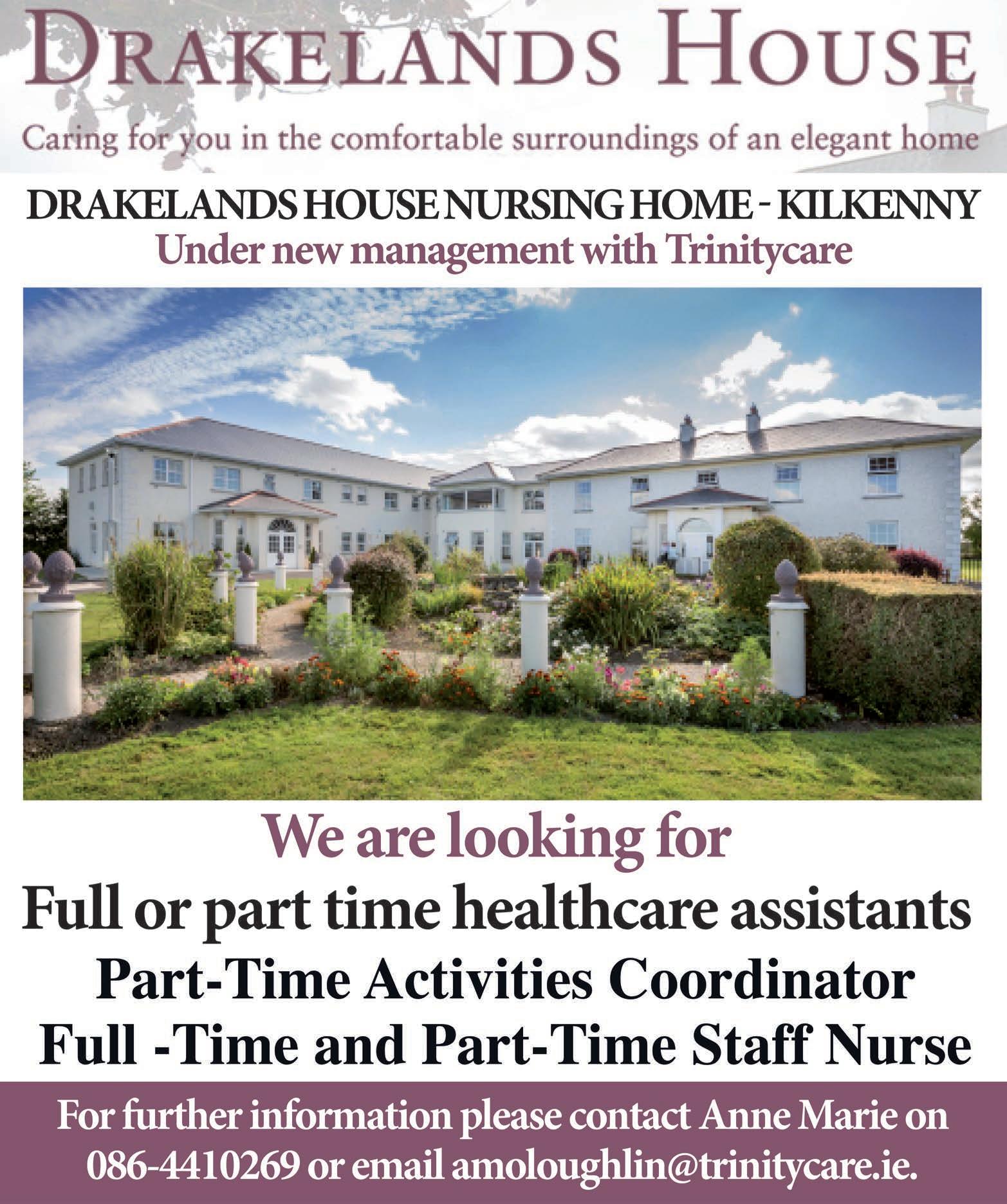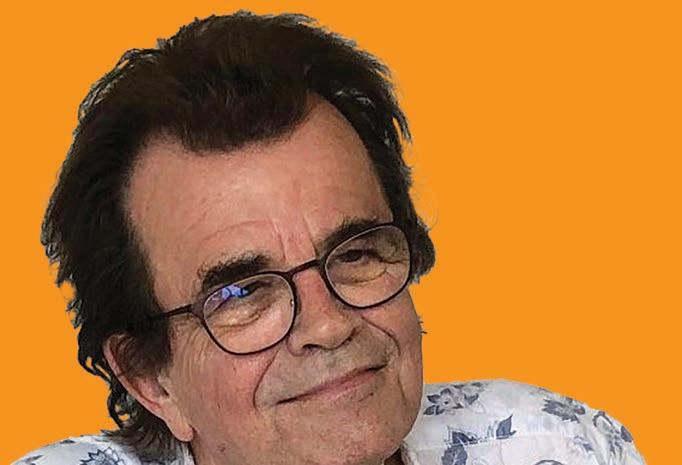
11 minute read
Paul Hopkins
The Fact OfThe Matter

Advertisement

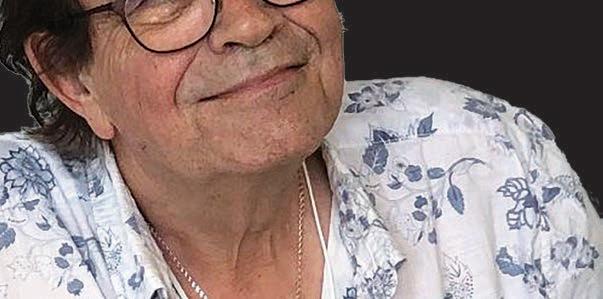
PAUL HOPKINS Turning a blind eye to vision of the future
One of my abiding memories of my early school days is my father picking me up outside the school gates, on his bicycle — my mother having put an old cushion on the crossbar to make my journey across the city more comfortable.
We were heading right across ‘town’, as it was back then, to the rooms of Dr O’Donoghue in the Georgian con nes of Merrion Square. Rooms I remember with chaise lounges, ne oak bureaus and dark, heavy drapes where the dying light of an evening would attempt intrusion. at, and the creaking oorboards, whose simple, understated mathematical ratio went back to the reigns of the rst four Kings George of England.
Dr O’Donoghue was my eye doctor, my ophthalmologist, who, as a private practitioner, had been looking after my ‘lazy’, almost sightless, eye since rst spotting me as a year-old baby with my mother anxiously waiting in Temple St Children’s Hospital and kindly removing me from the public list, such was his interest — then a young professional — in my particular condition.
My e ectively useless, bum eye and my wearing of glasses to correct my de ciency have de ned much of my countenance for much of my life, the mental landscape of my childhood haunted with derisive echoes of ‘specks’, ‘bottle top’, or ‘old four eyes’.
I learned to live with it, the name calling and the physical shortcomings — the latter largely excluding me from the sporting world of formative years and from any notion in my secondary school years of wanting to be an airline pilot.
My glasses, my spectacles, down the years — the many years — have become my constant companion; if not permanently perched on my nose, then never far out of reach; the rst ‘go-to’ in the morning from the bedside locker and the last item removed at night.
From bifocal lenses to varied focals, tinted to lightsensitive, my every-otheryear change in style (a new prescription permitted my indulgence) became a fashion statement that, down the years, saw me adapt varying guises from John Lennon to Elton John to Elvis Costello to nally just plain old me. e eyes may well be the mirror of the soul but they are also fundamental tools for the working journalist. We, who practice our trade on this remorseless and relentless treadmill, need our eyes to observe and watch and then to record and explain an evolving story. He’s a good journalist, my editor would say, he’s a great eye for a story. Or, my editor would say, we better keep and eye on that story. Or, who’s watching the news?
Or CNN anchor Erin Burnett: “All eyes are on Taiwan tonight.”
And so it goes...
I was out some weeks back for dinner with an old friend I literally had not laid eyes on in 30 years. Not long after we had settled in, I noticed an aura of gold and black light surrounding her persona as she chatted away opposite me. en, suddenly, and with no warnings or signs or symptoms of any kind, the sight in my right eye went poof! and disappeared. A black veil of darkness descended over the eye, the one that had been lazy all its life.
A consultation the next day with my local eye doctor saw me o to the Mater Hospital. I had had a stroke, which brought no debilitating consequences at all bar the long black veil of blindness. An operation some days later — by a Dr O’Donoghue! — opened up the right side of my neck and cleaned out the carotid artery to avoid a repeat episode.
As I write, I am still blind in my bad eye. e chances of any sight returning are negligible. But, I am okay: I never used that bum eye much anyway, my other eye being the stronger with years of over-compensating for the lazy one. I like to think, though, that that old eye, with its lifetime of shirking responsibility, in nally giving up on his distorted views, guided the rogue plaque towards itself, rather than my brain, and laid down his life for the corporal body.
Had plaque reached my brain, the possible consequences don’t bear thinking about.
I am okay. Really. And I’m not alone. ere are an estimated 246,773 people in Ireland who are blind or visually impaired. At the end of the day, in the land of the blind the one-eyed man is king.
Meanwhile, what the future holds for me and my oneeyed world remains to be seen…

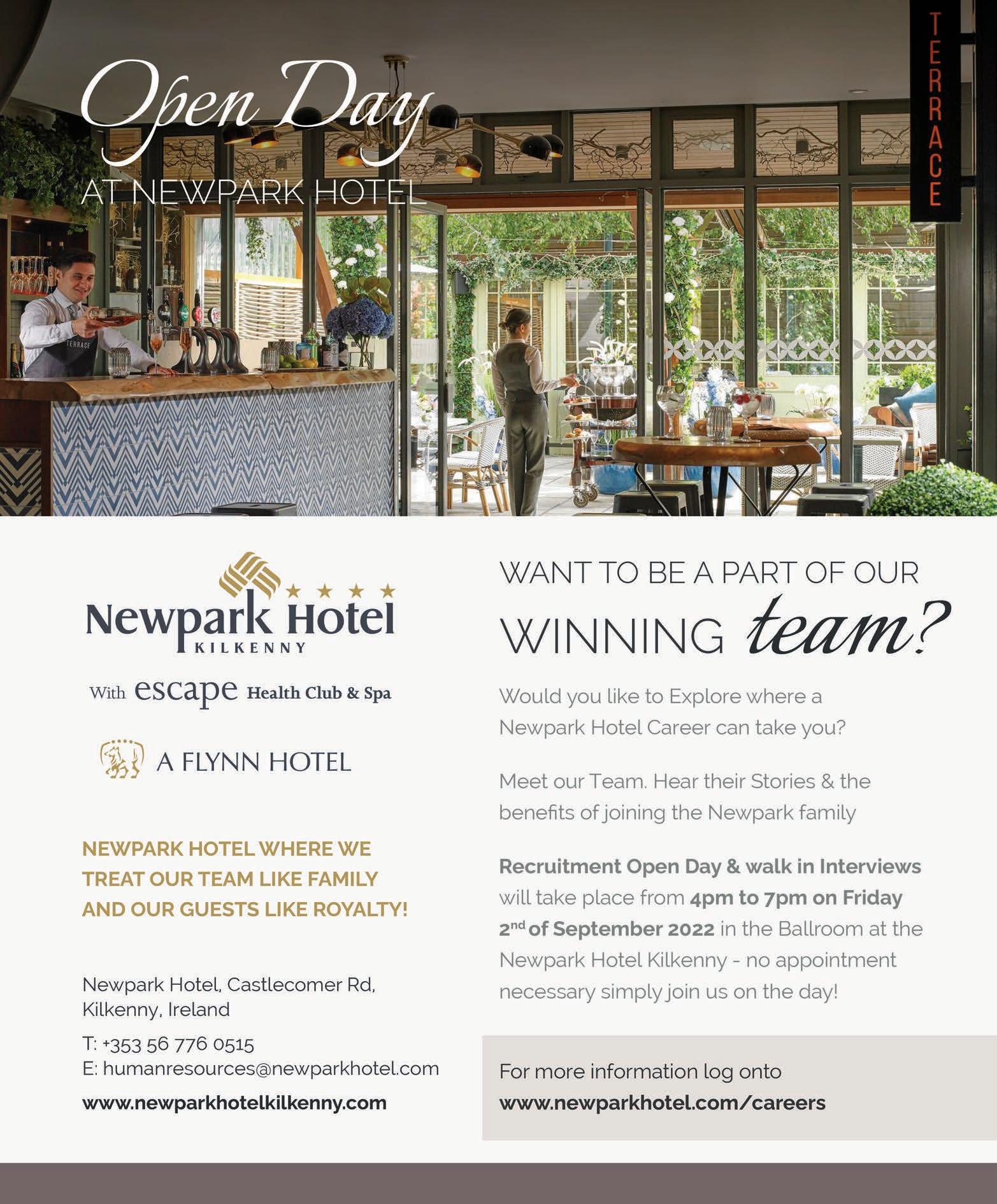
Pharma giant MSD to create 100 jobs in Carlow
e pharmaceutical giant MSD has con rmed it will ll 100 new long-term jobs in Co Carlow as construction gets under way on a new manufacturing facility at the site of its existing biologics formulation and lling plant in Carlow town. e company already employs 530 people at the site. e new sterile manufacturing facility is being built for production of next generation oncology biologics. News of the investment was rst reported by the Sunday Independent in April and planning is now in place.
e construction work will employ around 700 people. Once the new facility is operational it will have a sta of 100 including highly skilled jobs in quality, operations, engineering, supply chain and technical support.
Planning documents show the new development will have a total gross oor area of over 1.9 acres and will include a new two-storey building, incorporating production suites, utilities, a warehouse, workshops, laboratories, o ces, and plant rooms.
MSD Ireland has more than 2,800 employees across its sites in Ballydine, Co Tipperary, Brinny, Co Cork, Dunboyne, Co Meath, Carlow and Dublin
Marie Martin, site lead at MSD Carlow, said demand for the rm's vaccine and biologics products has grown. " e new facility will play a pivotal role in ensuring we can continue to sustain future supply to meet medical needs. e talent and commitment of our team is unmatched in the industry and we're very proud to see our operations and our team continue to expand,” she said.
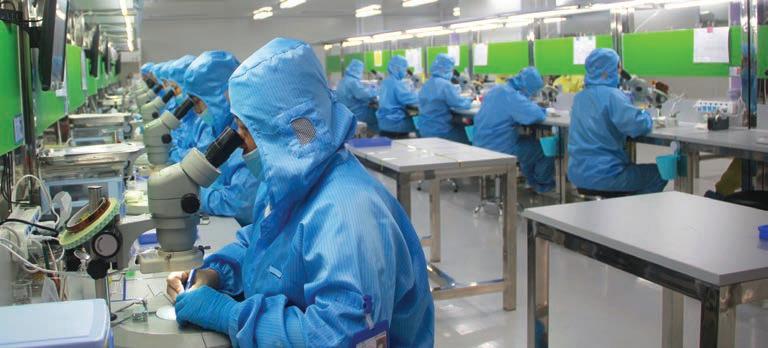
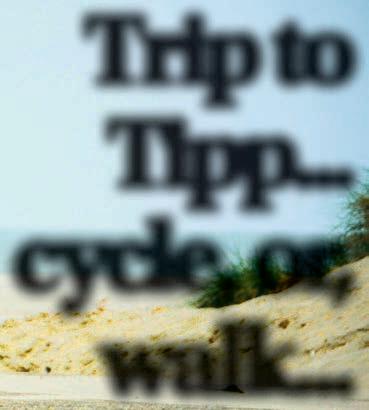
Major look at country's power amid new fears
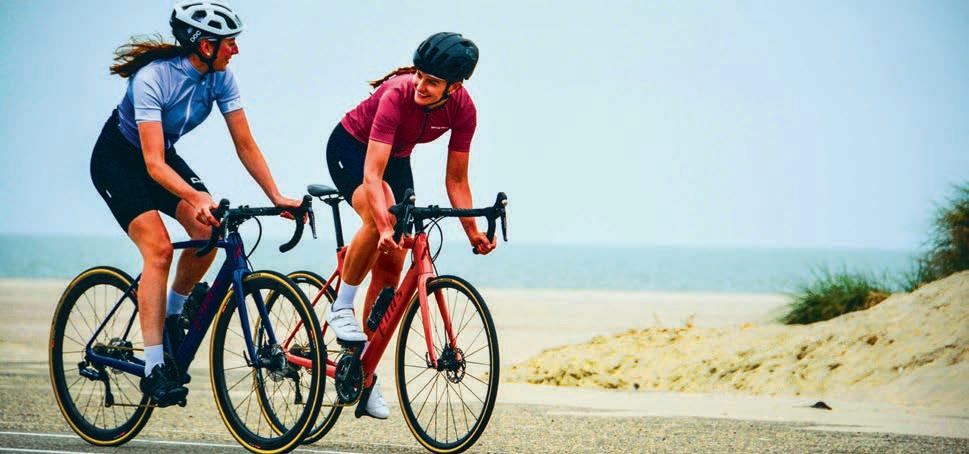
A review of the security of the country's electricity and gas supply is due for completion within weeks.
It comes amid growing fears of power outages over the coming winter as demand for electricity rises faster than supply can increase to meet it.
The national energy regulator, the CRU, recently issued an emergency document to electricity supply companies, proposing steep new tariffs for large powerusing businesses to try to encourage them to ease off on usage during periods when supply is under strain.
Power companies were also told to find ways to get households to avoid unnecessary electricity use during peak times, particularly during the daily 5pm-7pm demand surge.
According to a report in the Irish Independent, the largest electricity suppliers said they would be engaging with the CRU on the matter but had not yet finalised their responses.
They have until September 1 to respond, a deadline the CRU acknowledged was unusually tight but said was necessary given the urgency of the issue.
Wider political and industry reaction to the CRU's intervention has ranged from shock to annoyance to anger. Much argument has focused on the role of data centres in draining power from the national supply.
The collapse of several contracts that were to have secured back-up winter supply from electricity generation companies is also under the spotlight.
A review into how such arrangements are being handled and how the country's electricity supply has become so perilous was announced two months ago, with Dermot McCarthy, former secretary general at the Department of the Taoiseach, appointed to conduct it. But a much broader review, first announced by the previous government in November 2019 to examine the security of electricity now and up to 2050, is nearing completion.
London-based consultancy firm CEPA was awarded the contract to carry out the review in May 2021.
The biggest concern at that time was ensuring the rollout of offshore wind energy happened fast enough to supply the majority of the country's electricity needs by 2030, by which time the Corrib gas field will have run out.
Since the review began, the CRU has sounded the alarm over rocketing demand for power by data centres, progress on major new offshore wind-energy projects has slowed and the war in Ukraine and the global gas shortage has sparked a crisis over the cost and availability of gas on international markets.
Trip to Tipp... cycle, or, walk...
e 26th annual Trip to Tipp in support of the National Council for the Blind, Ireland (NCBI) is right around the corner and we would love for as many people to join us for the event which takes place on Sunday September 4, whether you Kyle, run or merely walk.
Long-time Trip To Tipp organiser Billy Shanahan said: “We couldn’t be happier to support NCBI with Trip to Tipp for another year. is event is so important to us all and to the work of NCBI in providing support and services to people who are blind or vision impaired. "We will also use this year’s Trip to Tipp to remember three people who were incredibly important to us and the event, namely Lorraine Shanahan, Gerry Shields and Michael Sutton.”
Kathleen Donnelly, alongside her daughter Annie, who is an NCBI service user, will be involved in Trip to Tipp again this year. Kathleen said: “We already have Annie polishing o her tandem bicycle in advance of this year’s Trip To Tipp! We can’t wait to get down to urles to enjoy what is always an amazing day out in support of NCBI.’
Participants can cycle, walk or run during the event, which kicks o at the Ursuline Sports Complex on Templemore Road in urles. Refreshments, a commemorative medal and a commemorative t-shirt will be available for all participants.
Cycle
• 9.30am – 120km Glen of Aherlow Challenge – €30 registration • 10am – 60km Scenic tour of Tipperary – €30 registration • 11.15am – 10km Family Fun Cycle – €10 registration Walk • 10 – 10km walk – €10 registration Run • 11am – 10km Road Run – €10 registration Showers are available on the day. All cyclists must wear helmets.
* Participants can register for their selected Trip to Tipp event online through the event page on the NCBI website, or on the day at the Ursuline Sports Complex.
UK economic woes 'will rub off on us'
Ireland is set to import some of Britain's increasingly grim economic woes, even if the country importing less UK goods post-Brexit.
Fears of stag ation — where high in ation is coupled with low or no growth — are now gripping the UK after Citigroup predicted price rises could hit 18.6% in January, an outcome that could prompt interest rate hikes of up to 7%, analysts have said. e Bank of England predicts the British economy will go into a 15-month recession this winter, and could stagnate for years after that. Smaller Irish rms — particularly those in the agri-food or engineering sectors that are more exposed to the British market — are likely to feel the hit. " is is a slowly boiling frog of an issue in our nearest market, which we still have a very close economic relationship with,” said Simon McKeever, chief executive of the Irish Exporters Association. "As it boils and boils and boils, and the economy slows down over there, will they be buying less and less of our stu ?”
Although trade with Britain su ered last year as a result of Brexit, Britain was still the destination for 11pc of Irish goods in June.
For indigenous rms, the UK makes up around 30% of all goods exports, rising to around 60% for agri-food.
Services exports to Britain rose by €1bn in the rst quarter, year on year, while imports from Britain -— particularly fuel — are also on the rise.
But with UK workers' real wages down 3% in the second quarter, a record decline, and consumer con dence at its lowest since 1974, it bodes ill for Irish rms. "A general decline in demand is likely to accompany the deteriorating economic circumstances,” said Kieran McQuinn, a research professor with the Economic and Social Research Institute. " at all would have a material impact, particularly for Irish rms that are trading still with the UK. "Irish SMEs would still source a lot of their inputs from the UK market, as well. at could be quite important in terms of their costs.”
